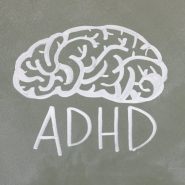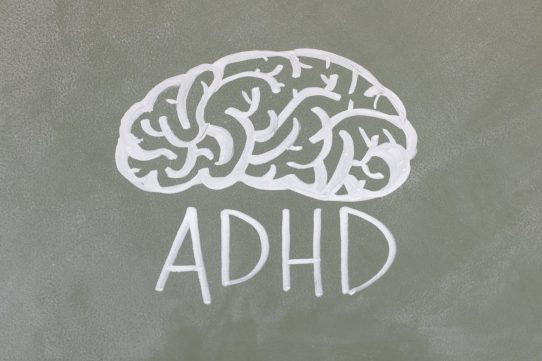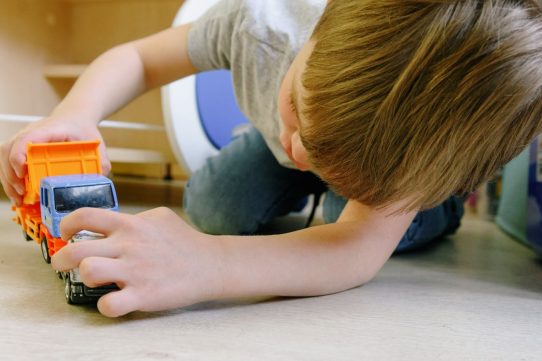Despite growing awareness, many myths about autism still shape how people see, talk about, and respond to autistic individuals. These misconceptions can cause misunderstanding, exclusion, and even fear — not because people are unkind, but because they’re often uninformed.
Autism isn’t a mystery to solve or a problem to fix. It’s a form of human diversity — a different way of experiencing the world. The more we replace myths with facts and empathy, the more inclusive our communities become.
Myth 1: “Autistic people don’t feel emotions.”
This is one of the most persistent and harmful myths. In reality, autistic individuals feel emotions deeply — sometimes more intensely than others. What differs is how those emotions are expressed or regulated.
An autistic child might not cry when upset or might laugh when nervous, leading others to misread their feelings. Some find verbal expression difficult and may communicate through movement, writing, or gestures instead.
The truth: autism affects how emotions are communicated, not whether they exist. With patience and understanding, you’ll often find that autistic individuals are some of the most empathetic and emotionally aware people you’ll ever meet.
Myth 2: “Autism is caused by bad parenting or vaccines.”
This outdated belief has been thoroughly debunked. Scientific research across decades confirms that autism is not caused by vaccines, parenting styles, or environmental neglect.
Autism is a neurodevelopmental difference — meaning it arises from the way the brain is wired and processes information. Genetic factors play a significant role, and while environment may influence expression, it does not cause autism.
The persistence of this myth has caused deep harm to parents who already carry the weight of uncertainty. No one “causes” autism. It is part of the natural variation of human development.
Myth 3: “All autistic people are the same.”
Autism is a spectrum, and no two people experience it the same way. Some may speak fluently; others may be nonverbal. Some thrive in highly social settings; others prefer solitude. Some have strong intellectual or creative abilities, while others may need lifelong support for daily living.
Thinking of autism as a single pattern misses the diversity that defines it. The phrase “If you’ve met one autistic person, you’ve met one autistic person” exists for a reason. Each person’s combination of traits, interests, and challenges is unique.
Myth 4: “Autism can be cured.”
Autism is not a disease — it’s a different way of processing information, communicating, and interacting. Because it’s not an illness, it doesn’t have a “cure.”
Attempts to “normalize” autistic behavior through punishment or forced conformity have often caused more harm than good. The goal of support should be understanding, adaptation, and acceptance, not elimination.
Therapies, education, and sensory supports can help autistic people build skills and manage challenges, but these are tools for empowerment — not cures. The focus should always remain on quality of life, dignity, and self-expression.
Myth 5: “Autistic people don’t want friends.”
Many autistic individuals deeply desire friendship, connection, and belonging. What makes social interaction challenging isn’t a lack of interest — it’s the difficulty interpreting neurotypical social rules that others take for granted.
They might not know when to start or end a conversation, how close to stand, or how to read a facial expression. These challenges can lead to misunderstandings and isolation, not because they want to be alone, but because social environments can be confusing or exhausting.
Friendship often flourishes when people meet on shared interests rather than conventional expectations. Understanding, patience, and curiosity go a long way.
Myth 6: “Autistic children don’t make eye contact because they’re rude or disinterested.”
Eye contact can be physically uncomfortable or distracting for many autistic people. It may increase anxiety rather than connection. Avoiding eye contact isn’t a sign of disrespect — it’s a form of self-regulation.
Some people focus better when they’re not forced to look directly at someone. Others may make brief eye contact once they feel safe. Respecting these boundaries shows acceptance of authentic communication styles.
True connection isn’t measured by where someone’s eyes are — it’s measured by attention, trust, and understanding.
Myth 7: “Autistic people lack empathy.”
This misconception often stems from miscommunication. Autistic empathy may look different, but it is no less real. Many autistic individuals feel profound emotional resonance with others’ experiences — sometimes so much that it becomes overwhelming.
The real issue lies in differences in social signaling. An autistic person may not respond with conventional gestures like saying “I’m sorry,” but might show empathy by helping, fixing, or offering practical comfort.
Research increasingly supports the Double Empathy Problem, which suggests that misunderstandings go both ways — autistic and non-autistic people struggle to interpret each other’s cues. The empathy is there; it’s just expressed differently.
Myth 8: “Only boys are autistic.”
For decades, autism was underdiagnosed in girls and women because early research focused almost entirely on boys. Girls are more likely to mask — consciously or unconsciously copying social behaviors to fit in. As a result, many girls go undiagnosed until adolescence or adulthood.
Autism exists in all genders. Recognizing this helps ensure that everyone receives support, regardless of how their traits present.
Greater awareness of gender differences is helping more girls, women, and nonbinary individuals find understanding and community later in life.
Myth 9: “Autistic people can’t be independent.”
Many autistic adults live independently, maintain relationships, build careers, and raise families. Independence looks different for everyone — it may include living alone, managing finances, or simply having autonomy in daily decisions.
While some individuals may need lifelong support, others thrive when given the right accommodations and respect. Independence shouldn’t be measured by conformity to neurotypical norms but by freedom, choice, and quality of life.
Myth 10: “Autism is new — it didn’t exist before.”
Autism has existed throughout human history; it simply went by other names or was misunderstood. In the past, individuals with autistic traits were often labeled “eccentric,” “difficult,” or “withdrawn.”
Increased awareness, not an increase in cases, explains the rise in diagnoses today. More accurate understanding allows families to access resources, educators to tailor learning environments, and society to embrace neurodiversity more openly.
Why Myths Persist
Misinformation often lingers because of fear and misunderstanding. For years, autism was discussed mainly by professionals, not by autistic people themselves. Without authentic voices, stereotypes flourished.
Today, more autistic individuals and their families are sharing their stories, breaking down misconceptions, and reframing autism as part of the neurodiversity movement — a celebration of different minds and ways of being.
Education, representation, and conversation are the most powerful tools against stigma. When communities listen to autistic voices, the myths fade — replaced by genuine understanding.
Building a Culture of Acceptance
Acceptance begins with everyday language. It means replacing labels like “high-functioning” or “low-functioning” with respect for each person’s individual needs. It means recognizing that social and sensory differences are not flaws to fix but realities to accommodate.
At home, in classrooms, and at work, inclusion grows when we adapt environments instead of expecting autistic people to adapt constantly. That shift — from “fit in” to “belong” — is what builds real acceptance.
Final Thoughts
Myths and misconceptions about autism continue to fade as families, advocates, and autistic individuals speak openly about their experiences. The truth is simple: autism is not an epidemic, a tragedy, or a label to fear. It’s a way of being human.
When we replace judgment with understanding, we make space for genuine connection and respect. The more we learn, the more we realize that autism has never been about limitation — it has always been about difference, and difference is something to embrace.
Photo by Mikhail Nilov: https://www.pexels.com/photo/boy-under-a-blanket-8654461








